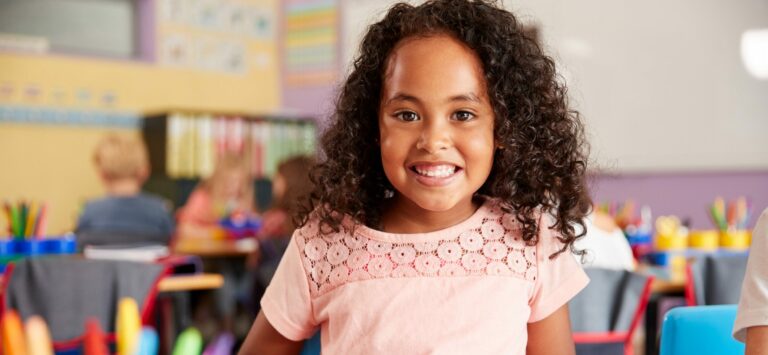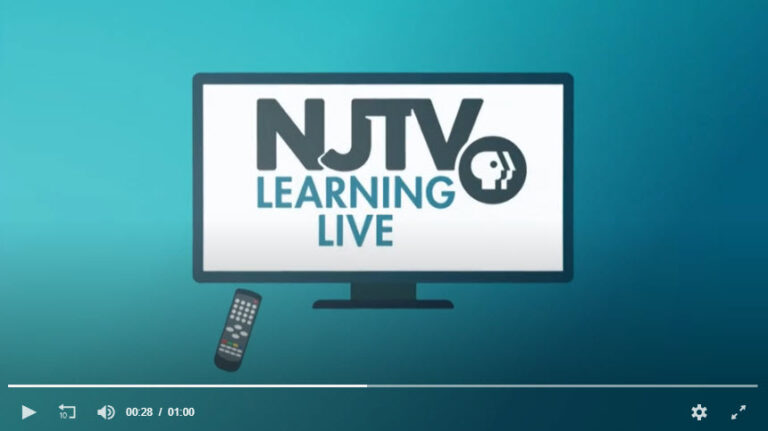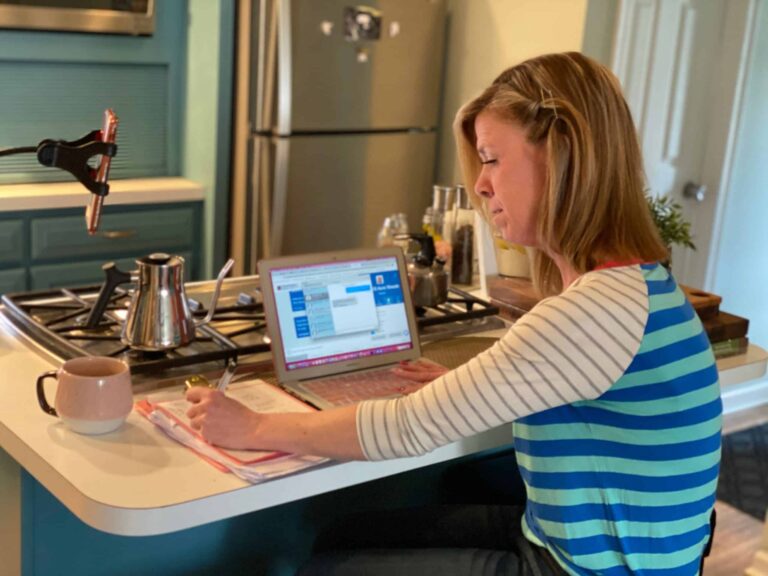By Maurice J. Elias, Ph.D.
Maurice J. Elias is the director of the Rutgers University Social-Emotional and Character Development Lab, which has worked over the past three decades to promote research, policy, and practice to benefit schools nationally and internationally. The lab can be reached at SECDLab@gmail.com. Also see Elias’ recent NJEA Review article on promoting students’ civic engagement, civil discourse, and social action.
While speaking to the Northeast Ohio Teachers Association in Cleveland, Sargent Shriver said that teaching was the hardest job in the world. He said this in 1972 during a speech on the campaign trail to become the U.S. vice president, but he could not have imagined the circumstances teachers are dealing with now, as COVID-19 circles the globe.
Teachers are being asked to transform the way they teach. Of course, there has been online instruction for some time, but we have never delivered it at scale, to every learner, with so little lead time.
Every day, teachers are asked to use familiar modalities to teach in extremely challenging circumstances. Meeting diverse learning needs face to face is a constant struggle. Helping students and families be prepared for the job of learning in an increasingly globalized world is a task our education system did not face squarely before the coronavirus. Teachers are no strangers to being asked to do the impossible. But that does not make it easy, fun, or reasonable—especially now.
You are not teaching subject matter. You are teaching children and youth and serving as guides to their parents and guardians. Being in a crisis makes it all the more necessary that we think critically. And that means remembering that learning is relationship-centered and driven powerfully by emotion. It means that we will promote optimal learning if we keep students’ social and emotional development, their SEL competencies, strongly in mind. How many workshops on trauma-informed learning have we all attended? It’s time to put that learning into practice. Here’s how:
Virtual instruction with a social-emotional learning lens
Be realistic about your own feelings
This is not a social experiment in distance learning. This is a response to a national crisis. During hurricanes, earthquakes, or wildfire, we would not be expected to simply alter our instructional modalities and not miss a beat. These are cataclysmic events that affect us directly, change our lives at home, and lead to worry about the well-being of loved ones. We cannot teach as if this is not true, no matter how professional we are. And we cannot teach as if our students and their families are not experiencing the exact same things.
So, don’t be too hard on yourself. Don’t expect perfection. Be prepared to have good days and bad days with your remote instruction and learn from both.
Be reassuring
Communicate that you know this is all new and it may be difficult, but you will find your way together. Don’t hesitate to share your feelings of uncertainty, as well as innovation, and playfulness. Being on screens can be intense, and a lighter tone about what you are doing and how you are doing it fits the reality of the situation: no one is quite sure how well this is all going to work, but anything learned, anything gained, really matters.
Promote problem solving and contributions
Children cannot learn if they don’t feel a sense of safety, and all the news they hear about COVID-19, as well as the significant health risks, can make it hard for them to focus. They need to know that if they practice good hygiene and observe social distance, they can be safer as well.
But go farther. In language appropriate to the age of your students, bring the virus into your teaching so that they can be better informed. Conversations in science can address the nature of infectious diseases, how they are caught and transmitted, vaccines, and so forth. Conversations in social studies might address the geography of the spread of the virus and look at news articles to promote realistic understanding and reduce panic. Discussions in math can cover infection rates and a current understanding of different outcomes for different age groups. Conversations in language arts might focus on stories related to the outbreak, such as those on the cruise ships, those in self-quarantine, and so forth. It’s a time for any health instruction to communicate how keeping oneself generally healthy and fit act as a protective process against any illness.
To the extent possible, see if students can direct their learning products outward. School Psychologist and SEL Coordinator in South Brunswick, New Jersey, Brian Eichert, suggests that this crisis provides many opportunities to ask our students to put themselves in others’ shoes and then think of some caring, supportive, kind action they can take.
Can they create cards to send to hospitals for recovering patients and health care and mental health workers? Can they send notes to local food stores that are still open and doing what’s necessary to get food to the community? Would some restaurant owners, chefs, and workers be willing to Skype into a virtual class to talk about their business, its challenges, and how they are trying to keep people safe and fed?
Ask your students for their ideas about how to control infection, keep social distance, meet medical needs, and support the caregivers. These are the future adults that will have to address the next crises we inevitably will face—let’s build their problem-solving skills, starting now.
Foster self-management and emotion regulation
Try to establish routines that will themselves be reassuring. Where possible, start instruction with a morning meeting, sharing circle, or some other activity that allows students to share their feelings, what may have happened since yesterday that occupies their emotions.
Ask them to talk about what is going well, and how they most like spending their time now. Build in strength breaks, remembering that screen time can be intense, especially when learning new things and experiencing difficulties. Take an occasional visit to Google Earth with your students and show them some of the wonders of the world, to spark their curiosity. Take an occasional visit below the seas, or out in space. Your students will come to look forward to these breaks tremendously and it will help sustain their attention and interest during less compelling learning tasks.
Rick Cohen, assistant superintendent for curriculum and instruction in Metuchen, New Jersey, sees an opportunity for journaling: children can do some writing about their feelings with regard to what is happening in their homes, with their families, in their communities, and the wider world. This could be a particularly good opportunity for students learning English. Teachers can share their own journals, to model writing, emotional vocabulary, and their own emotion regulation strategies. Journals can be submitted for feedback in the spirit of improvement, not grading. Consider also options for audio or video journaling.
Celebrate accomplishments
If you think you are going to, or must, achieve the same student growth objectives that you can achieve in schools—and that’s hard enough—you are in for a really time. Celebrate what goes right. Point out every little gain, every small win, as if they were MacArthur Genius awards.
Be optimistically future-minded
One can say without exaggeration that time will be lost, and progress will be slowed, in just about all of our lives and learning situations. We also can say that if handled well, with an optimistic spirit, confident that we are mainly preparing to pick up where we left off when the virus is controlled—rather than advancing at the prior pace—we will be giving our students and their families the greatest gift possible. Keeping our students engaged in learning is the ultimate goal.
Show and encourage empathy and perspective taking
So many teachers will be juggling their own childcare, balky internet connections, and the like. Remember that the same is going on at the other end of your virtual connections. What your students are experiencing at home is REALITY, not virtual reality. Ask them to share where they are, physically. Are they in the kitchen? Another room? Who else is around? Are there other siblings learning also? Keeping your students’ perspective in mind and, where appropriate, sharing your own similar logistical turmoil will make your instruction more effective.
Even before you learn about students’ feelings and situations, be prepared to work with your schools to arrange a protocol for alerting school counselors, psychologists, or social workers when you suspect a child is having difficulty and/or if there are significant problems in the learning environment. School counselor Andrea Sadow, in Summit, New Jersey, notes that no one—not a teacher, a counselor, or any educator—can address all the issues being faced by students. So be sure to know when and how to get help if needed.
Finally, consider suggesting to parents that kids get dressed for school even though they are at home. Being in pajamas is great, but it can make it harder for children to give their online learning the same focus they might if they had to “get ready and pay attention.” Of course, that might mean no pajamas for the teacher as well.
Take care of yourself
New Jersey educator Laura Bond reminds us that virtual learning often can feel very isolating compared to the highly social environment of schools. We need to take care of ourselves.
There is a growing literature on the benefits of providing mindful moments for yourself, your family, and your students. Please take this very seriously. Think of mindfulness as vitamins for your mind, heart, and spirit. Daily doses increase health! Some excellent resources for this already exist, particularly at Edutopia’s mindfulness page.
Michele Santamaria, a special education instructor and SEL leader in South Brunswick, New Jersey, suggests that other good resources, including Headspace and Mindful Schools’ article “Take a Break, Keep Perspective, Be Kind in Uncertain Times.”
Mission Impossible? or Boldly Going Where No One Has Gone Before?
Is this a “mission impossible”? Or are we “boldly going where no one has gone before”? While both are true, focusing on the latter will help us keep the best perspective, do our best in the situation we find ourselves in, and learn the most we can from what is happening. Onward!!!!




